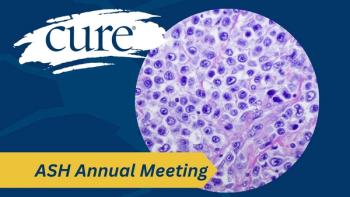
'Bringing Hope Home' After a Cancer Diagnosis
When Paul Isenberg’s wife, Nicole, was diagnosed with stage 4 Hodgkin lymphoma shortly after the birth of their child, Gabrielle, the couple realized two things: how blessed they were and that some people going through cancer have nobody to turn to.
When Paul Isenberg’s wife, Nicole, was diagnosed with stage 4 Hodgkin lymphoma shortly after the birth of their child, Gabrielle, the couple realized two things: how blessed they were and that some people going through cancer have nobody to turn to.
“During that time, we had the wherewithal to pay our bills. I had a great job that allowed me the flexibility to go to all the treatments with her. We had friends and family that were able to help take care of things,” Paul said in an interview with CURE at the Philadelphia Women’s Networking Connection’s breast cancer event.
In fact, Paul was always running into old friends, and would come home and say how he ran into so-and-so and that “he is such a great guy.” One day, Nicole suggested that Paul gather together a group of these great guys for a good cause. In 2001, the Isenbergs hosted the first “Great Guy Dinner,” that had about 100 attendees and raised over $13,000 for the American Cancer Society.
Nicole died in August 2003 after six years of fighting the disease. While his wife’s passing put an end to his long days and nights as a cancer caregiver, it did not quell Paul’s motivation to care for families who were also dealing with the disease. If anything, her story motivated him even more.
In 2008, he co-founded the Great Guys Group — which eventually changed its name to Bringing Hope Home in 2012 – to help Philadelphia-area families in need.
The organization helps with
Paul explained that people are typically shocked and relieved when Bringing Hope Home reaches out to tell them that they are going to help.
“A lot of time, there’s pause for five seconds — which is an eternity on the phone – then you hear crying or laughing or astonishment. For them, it’s great that they’re getting a break, but it shows that somebody that they don’t even know wants to help them. That means so much to us,” he said.
Within its first year, Bringing Hope Home raised about $125,000 and helped 10 families. In 2018, they raised over $2 million and helped over 700. In fact, the nonprofit is gearing up to tally 5,000 families it has helped since its inception.
But Paul still wants to help more. When asked what he sees for Brining Hope Home in the next five or so years, he responded, “I want it to be five offices, five markets, helping 5,000 families each year, $5 million.”
Lastly, Paul knows how meaningful a bit of respite can be during such a tough time. “Financially, our help gets people caught up,” he said. “But it also gives them the opportunity to take a breath. It changes their outlook, and hope is important.”
To learn more about Bringing Hope Home, visit





